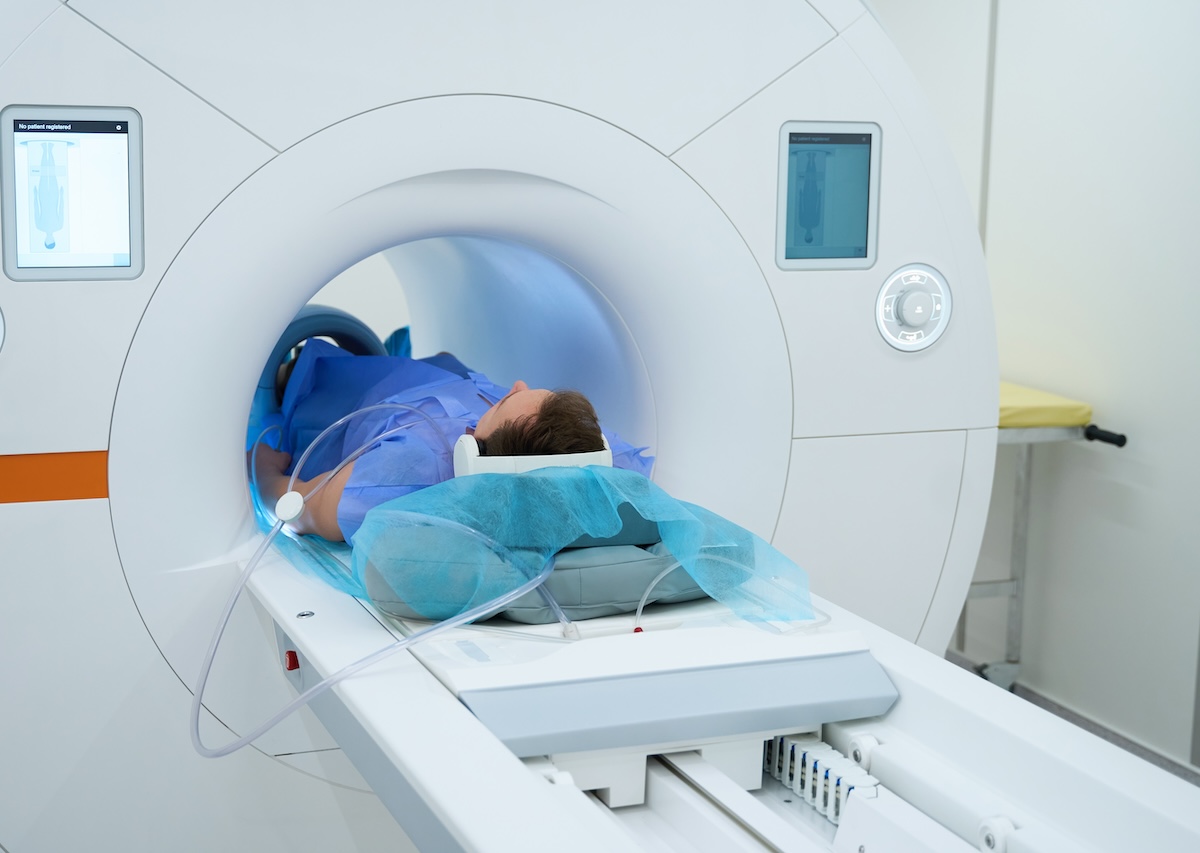Making Healthier Bodies
Collaborating across all disciplines, NYU Tandon has been working at the intersection of engineering, healthcare, and life sciences for decades, and our researchers have the expertise to create next-generation solutions at every scale. From advances in drug delivery to integrating AI to healthcare experiences, we’re advancing the future of healthcare for all.

Drug delivery, redefined
When it comes to delivering drugs to the body, a major challenge is ensuring that they remain in the area they’re treating and continue to deliver their payload accurately. While major strides have been made in delivering drugs, monitoring them is a challenge that often requires invasive procedures like biopsies.
Researchers at NYU Tandon led by Professor Jin Kim Montclare (CBE, SEI), have developed proteins that can assemble themselves into fibers to be used as therapeutic agents for the potential treatments of multiple diseases. These biomaterials can encapsulate and deliver therapeutics for a host of diseases. But while Montclare’s lab has long worked on producing these materials, there was once a challenge that was hard to overcome — how to make sure that these proteins continued to deliver their therapeutics at the correct location in the body for the necessary amount of time.
How can our social situations affect our well-being?
Data science methods can help overcome challenges in measuring and analyzing social determinants of health (SDoH), according to a paper published in Lancet Digital Health, helping mitigate the root causes of health inequities that are not fully addressed through health care spending or lifestyle choices.
The paper came out of the NYU-Moi Data Science Social Determinants Training Program (DSSD), a collaboration between New York University, the NYU Grossman School of Medicine, Moi University, and Brown University funded by the National Institutes of Health (NIH). Through interdisciplinary training at NYU, DSSD aims to build a cohort of data science trainees from Kenya.
Associate Professor Rumi Chunara (CSE, CUSP, VIDA, NYU School of Global Public Health) is a DSSD Program Principal Investigator and wrote the paper with colleagues from DSSD’s collaborating institutions and the NIH.
Identifying concussions with the help of AI
An artificial intelligence (AI) computer program that processes MRI results can accurately identify changes in brain structure that result from repeated head injury, a new study in student athletes shows. These variations have not been captured by other traditional medical images such as CT scans. The new technology, researchers say, may help design new diagnostic tools to better understand subtle brain injuries that accumulate over time.

Experts have long known about the potential risks of concussion among young athletes, particularly for those who play high-contact sports such as football, hockey, and soccer. Evidence is now mounting that repeated head impacts, even if they at first appear mild, may add up over many years and lead to cognitive loss. While advanced MRI identifies microscopic changes in brain structure that result from head trauma, researchers say the scans produce vast amounts of data that are difficult to navigate.
A new study from NYU Tandon and NYU Langone including first author Junbo Chen, a Ph.D. student at Tandon, showed for the first time that the new tool, using an AI technique called machine learning, could accurately distinguish between the brains of male athletes who played contact sports like football versus noncontact sports like track and field.
Modeling the brain
When Assistant Professor Erdem Varol (CSE, VIDA) arrived at NYU Tandon in 2023 and established his Neuroinformatics Lab, he explained, “Our goal is to find ways of understanding how the brain is wired. How do neurons fire and communicate? How are they connected?”
Those were the exact questions that interested doctoral candidate Alexander Ratzan.
Preventing strokes with lab table-to-bedside innovations
Carotid artery disease occurs when the vessels that deliver blood and oxygen to the brain become clogged, increasing the risk of a stroke. Strokes are now the leading cause of death and disability in the nation, so it’s imperative for physicians to be able to detect problems with blood flow and oxygen levels early on and take steps to correct them.
In mid-2022, personnel from NYU Langone approached the NYU Tandon Future Labs with a proposal. A Langone neurologist who specializes in intensive care after stroke had conceived of a new stent (a small tube used to hold open passages in the body, including narrowed arteries). His proposal was for the stent to both directly monitor and control blood flow to the brain. Unfortunately, the engineering involved in the device as proposed seemed impossible without help from NYU Tandon students.
The Future Labs approached Chair of the Biomedical Engineering department Andreas Hielscher for help.
Stroke rehabilitation at home
For survivors of strokes, which afflict nearly 800,000 Americans each year, regaining fine motor skills like writing and using utensils is critical for recovering independence and quality of life. But getting intensive, frequent rehabilitation therapy can be challenging and expensive.

Now, researchers led by Institute Professor and Director of the Center for Urban Science + Progress Maurizio Porfiri (MAE, BME, CUE), are developing a new technology that could allow stroke patients to undergo rehabilitation exercises at home by tracking their wrist movements through a simple setup: a smartphone strapped to the forearm and a low-cost gaming controller called the Novint Falcon.
American Heart Association recognizes young researcher's work

Biomedical Engineering Ph.D. student Kate Luu is currently studying vascular cell mechanobiology. She explains that as a person ages, the cells in the blood vessels get stiff and do not contract properly, leading to aneurysm and other heart conditions. “We’re trying to learn exactly why this happens, what factors contribute to it, and whether it can be reversed,” she says.
Her work, which she is conducting under the supervision of Professor Weiqiang Chen (BME, MAE), recently caught the attention of the American Heart Association (AHA).


